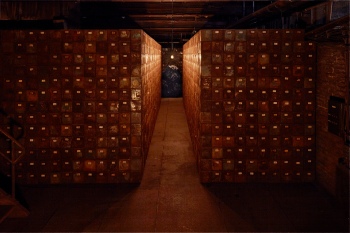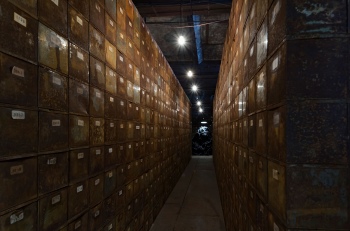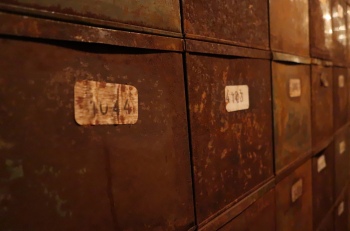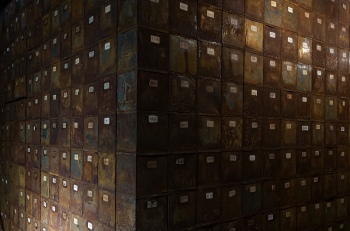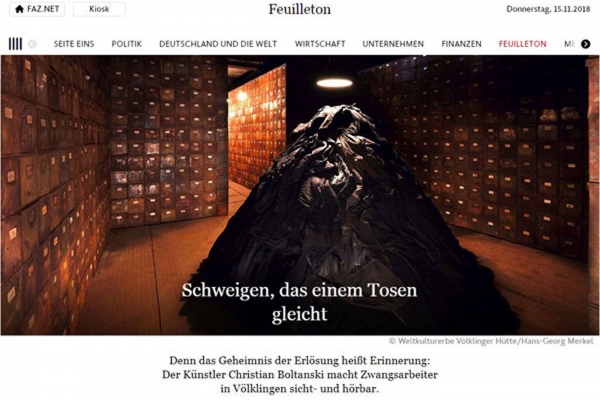Christian Boltanski - The forced labourers | Place of commemoration at the Völklingen Ironworks
Over the past few years, the Völklinger Hütte World Heritage Site has conducted and presented extensive research into forced labourers at Völklinger Hütte. The internationally renowned French artist Christian Boltanski has now created a memorial for the people who were forced to work at Völklinger Hütte. The result is an emotional work of art that keeps the memory of these people alive. The major installation by Christian Boltanski in the Völklinger Hütte sintering plant engages with the issue of forced labour in a new and deeply moving way.
Impressions
-

Christian Boltanski | Die Zwangsarbeiter I © Weltkulturerbe Völklinger Hütte | Hans-Georg Merkel
-

Christian Boltanski | Die Zwangsarbeiter II © Weltkulturerbe Völklinger Hütte | Karl Heinrich Veith
-

Christian Boltanski | Die Zwangsarbeiter III © Weltkulturerbe Völklinger Hütte | Karl Heinrich Veith
-

Christian Boltanski | Die Zwangsarbeiter IV © Weltkulturerbe Völklinger Hütte | Karl Heinrich Veith
-

Christian Boltanski | Die Zwangsarbeiter V © Weltkulturerbe Völklinger Hütte | Karl Heinrich Veith
-

Christian Boltanski | Die Zwangsarbeiter VI © Weltkulturerbe Völklinger Hütte | Karl Heinrich Veith
Over the course of the Second World War, 12,393 men, women and children from twenty countries were registered as forced labourers at Völklinger Hütte. Of these, 261 lost their lives, sixty of them children and infants. These people can be encountered between the claustrophobic walls of this archive of memories, with its seemingly endless stacks of archive boxes. Here and there, visitors catch a glimpse of a number, or of black trousers and jackets piled into a mountain of clothes. Meanwhile, the names of the forced labourers are whispered from all corners of the installation, sending shivers down the spine. Boltanski’s installation instantly transports visitors to another world.
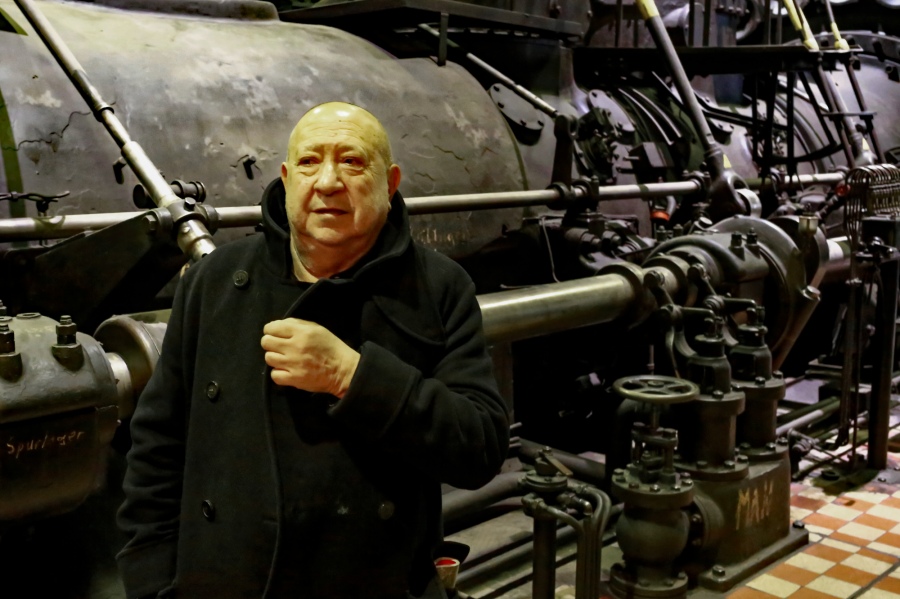
Portrait of Christian Boltanski in front of the blower machine 10
Copyright: Weltkulturerbe Völklinger Hütte | Karl Heinrich Veith
Christian Boltanski
* 1944 in Paris
+ 2021 in Paris
The work of the French artist Christian Boltanski centres on the theme of memory. Born in 1944 in German-occupied Paris to a Jewish-Ukrainian father and a Catholic Corsican mother, the memory of the Holocaust has been a defining influence on Boltanski’s life. His own childhood and past, transience, and the human attempt to resist forgetting and being forgotten are among his work’s recurring motifs. Throughout his career, Boltanski has explored the memories embodied by people and things. An originator of the conceptual art movement known as “Spurensicherung” (“Conserving Traces”)
